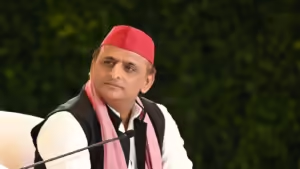BENGALURU: The launch vehicle of Chandrayaan-3 Vikram successfully separated from the propulsion module on Thursday, 34 days after they were launched together (July 14), bringing India one step closer to landing on the Moon.
The de-boost maneuvers, the first of which is scheduled for 4 p.m. today (August 18), will eventually bring Vikramreach into an orbit where the Perilune (closest point to the Moon) is expected to be 30 km and the Apolune (farthest point from the Moon) is expected to be around 100 km.
Although an exact orbit may not be possible, those margins would be factored into Isro’s planning.
The procedure for decreasing the velocity of the lander from 30km height to the final landing will begin once the 30km x 100km orbit has been achieved, which is the most critical part of the landing. Vikram’s orientation would be changed from horizontal to vertical, and the lander would soft-land on the Moon on August 23 if the final descent went well.
But first, how did Vikram and I part ways yesterday? After the integrated spacecraft—propulsion module and landing module combined—was stabilized in an orbit suitable for separation, Isro would have loaded the separation sequence of commands, which would have been executed autonomously by the onboard systems.
The lander with the rover was sitting in the cylindrical structure on top of the orbiter, which was an extension of the fuel tank. Clamps with two bolts held both of these modules together.
S Somanath, chairman of Isro, confirmed that the mechanism used for separation on Thursday was the same as Chandrayaan-2. That is, the two modules were held together by two halves of a metal flat spring. Two bolts were used to pre-load the springs. The bolts were sheared, allowing the lander to be released.
A scientist involved in the previous lunar mission stated that this mechanism was simple, reliable, and had extensive flight history.
“If the same mechanism as Chandrayaan-2 is used, then the systems are released by using a conventional explosive bolt cutter to cut the bolts that hold the clamp,” said former Isro chairman K Sivan. When clamped, this system has high strength and stiffness and releases quickly, typically in less than 50 milliseconds.
Future
The propulsion module, which is primarily responsible for transporting the lander and rover from injection orbit to the lunar orbit from which separation was to take place, also transports the Spectro-polarimetry of Habitable Planetary Earth (SHAPE).
SHAPE will observe Earth from the Moon in order to study the former’s habitable planet-like features, which will be used to explore exoplanets in the future. While there has been no immediate confirmation that Isro has made SHAPE operational—scientific instruments must be turned on via commands — the propulsion module, following lander separation, is designed to operate for three to six months.
However, depending on how much fuel the module has left and the state of the instruments on SHAPE, its life could be extended. “Meanwhile, the propulsion module continues its journey in the current orbit for months/years,” Isro said on Thursday. The SHAPE payload would conduct a spectroscopic study of the Earth’s atmosphere and measure variations in polarisation from clouds on Earth in order to collect signatures of Exoplanets that might be habitable!”












+ There are no comments
Add yours